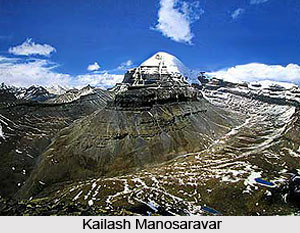 Tourism in Dharchula covers the tourist attractions like the ashramas, mathas, temples and the hilly beauties. Some of the tourist attractions like Narayan Ashram, Kailash Mansarovar, Tawaghat, Ogla and many other tourists" spots.
Tourism in Dharchula covers the tourist attractions like the ashramas, mathas, temples and the hilly beauties. Some of the tourist attractions like Narayan Ashram, Kailash Mansarovar, Tawaghat, Ogla and many other tourists" spots.
Narayan Ashram
Narayan Ashram is situated at an elevation of 2734 m. above sea level. It can be reached from Pithoragarh District via Ogla, which is 44 km from Pithoragarh), Jauljibi (77 km), Dharchula (94 km), Tawaghat (108 km). Tawaghat is the place where Dhauliganga and Kaliganga meet. Narayan Ashram was established by Sri Narayan Swami in 1936. During winter season the ashram remains closed due to heavy snowfall. And rainy season may cause damage to the road. Ashram keeps on conducting various social - spiritual activities for the members so the visitors are strictly advised to convey about their plan to the ashram well in advance.
Kailash Mansarovar
Manasarovar Lake lies at 4,590 m above mean sea level. The lake freezes in winter and melts only in the spring. The Sutlej River, the (Brahmaputra River), the Indus River, and the Karnali River all trace their sources to its close vicinity.
Mount Kailash
Lake Mansarovar is a place of pilgrimage, attracting religious people from India, Tibet and the neighbouring countries. Bathing in the Manasa Sarovar and drinking its water is believed to cleanse all sins. Pilgrimage tours are organized regularly, especially from India, the most famous of which is the Kailash Mansarovar Yatra which takes place every year. Pilgrims come to take ceremonial bathes in the cleansing waters of the lake.
Kali River
Kali River originates from the Greater Himalayas at Kalapaani at an altitude of 3,600 m, in the Pithoragarh District of Uttarakhand. The river is named after the Goddess Kali whose temple is situated in Kalapaani near the Lipu-Lekh pass at the border between India and Tibet. On its upper course, this river forms India`s continuous eastern boundary with Nepal.
Chirkila Dam
Uttarakhand is a land of rivers and mountains and thus holds a lot of potential for hydro electric power generation. A similar such initiative has resulted in the creation of the Chirkila dam on river Kali at Chirkila, a place 20 km ahead of Dharchula. The dam has a capacity of producing 1500 KW of energy. The dam is adjoined by a beautiful lake stretching up to 1 km in length.
Om Parvat and Adi Kailash
AdiKailash or Little Kailash or Jonglingkong Peak or Baba Kailash or Chhota Kailash is an ancient holy Hindu mountain in the Himalayan mountain range, lying in the Tehsil Dharchula, Pithoragarh district of Uttarakhand, near Sinla pass. Its appearance is distinctly similar to Mount Kailash in Tibet.
Jonglingkong Lake
Jonglingkong Lake or the Parvati Lake like Lake Mansarovar is sacred to the Hindu community people. Just opposite to the peak of Chota Kailash or Adi Kailash lies the mountain Parwati Mukut (Parvati`s Crown).
India-Nepal Border and India-Sino Border
The town is a sensitive area as it shares its borders with both Nepal and China. However, the area has always remained peaceful place and an excellent example of good inter-cultural ties between the nations- Nepal and China.



















